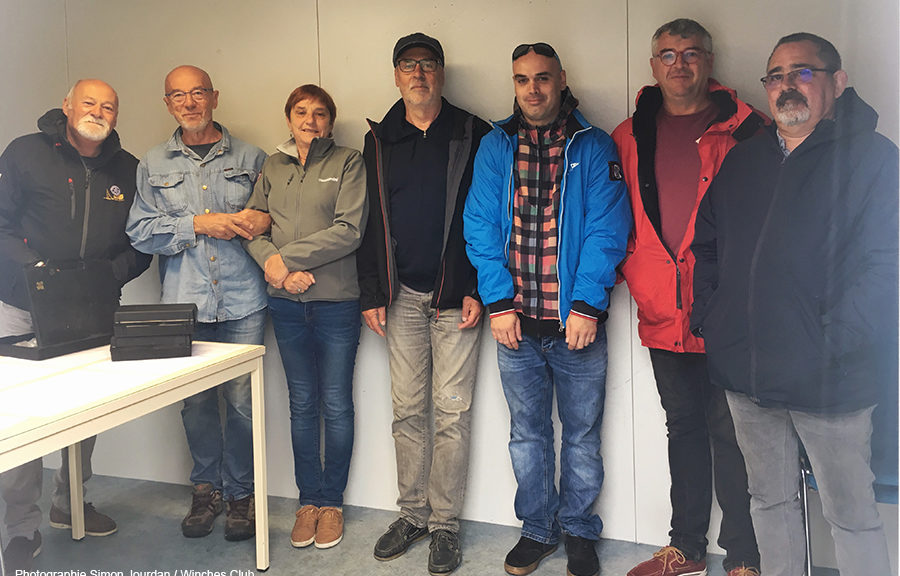One of the main goals of the Class Mini is to move towards more safety while maintaining the very sporty and innovative aspect of the Mini. This mindset, accentuated by stubborn memories of accidents, results in boat-competitor pairs among the safest of offshore racing.
Safety first
While the measurement defines the boat-specific safety systems, the safety inspection allows checking and validating the mandatory safety equipment that the skipper will take during the race. This equipment varies according to the category of the race.
Race are thus classified by the Offshore Special Regulations (OSR) according to the number of miles and the difficulty:
The Marie-Agnès Péron Trophy : OSR 3
The Mini-Fastnet : OSR 2
The Mini-Transat : OSR 1
The Vendée Globe : OSR 0

Volunteers are taking care of the inspection
One category separates the Marie-Agnès Péron Trophy from the Mini-Fastnet, so more safety equipment is required for the skippers.
In addition to the life raft, the survival container, the EPIRB beacon, the VHF, nautical documents and many other things, the equipment must notably include 2 TPS suits, an AIS transponder and a personal AIS beacon, a SSB radio, an extended pharmacy and additional survival food rations.

A team of volunteers is performing the safety inspection, open until the day before departure. Starting today (Tuesday), they will inspect more than 80 boats.

